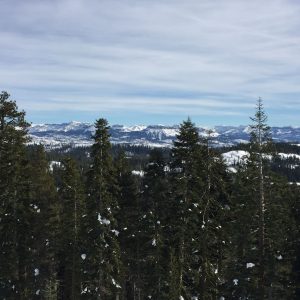NASA Shares New Findings About Sierra Nevada Mountain Growth
Pasadena, CA – Measuring the Sierra Nevada during California’s extreme drought and after significant precipitation has led NASA scientists to new thoughts about how our planet stores water.
Today, officials at NASA’s Pasadena-based Jet Propulsion Laboratory (JPL) shared findings from a just-published study. It shows that the Sierra Nevada mountain range rose nearly an inch in height from October 2011 to October 2015 during which the state experienced its most recent extended drought period. It also indicates that in the following two years of more abundant snow and rainfall the mountains have also fallen about a half-inch in height while regaining about half as much water in the rock as they had lost in the preceding drought.
“This suggests that the solid Earth has a greater capacity to store water than previously thought,” explains research scientist and study leader Donald Argus. He says significantly more water was lost from cracks and soil within fractured mountain rock during drought and gained during heavy precipitation than hydrology models show. This new finding will be part of a talk he is giving today at the American Geophysical Union’s fall conference in New Orleans.
Measuring Groundwater Within Mountain Rock
Using advanced data-processing techniques on data collected from 2006 through October of this year from 1,300 GPS stations installed as part of the National Science Foundation’s Plate Boundary Observatory in the mountains of California, Oregon and Washington, the stations measured subtle tectonic motion in the region’s active faults and volcanoes and continues to monitor elevation changes within less than a tenth of an inch.
What the research team was able to determine was that the amount of water lost from within fractured mountain rock from the 2011 to 2015 drought period amounted to 10.8 cubic miles of water. While too inaccessible to be used for human purposes, the scientists say the water is roughly equal to 45 times the amount of what Los Angeles currently uses in a year.
NASA JPL water scientist Jay Famiglietti says that this finding solves a mystery for hydrologists. “One of the major unknowns in mountain hydrology is what happens below the soil. How much snowmelt percolates through fractured rock straight downward into the core of the mountain? This is one of the key topics that we addressed in our study.”
Famiglietti points out that the techniques developed for this study will allow scientists to begin exploring other questions about mountain groundwater. Among these are what does the water table look like within mountain ranges? Is there a significant amount of groundwater stored within mountains? “We just don’t have answers yet, and this study identities a set of new tools to help us get them,” he maintains.
Study Dispels Previous Sierra Growth Theories
Before this study, scientists’ leading theories for the growth of the Sierra were tectonic uplift or Earth rebounding from extensive groundwater pumping in the adjoining California Central Valley. Argus has calculated that these two processes together only produced a quarter of an inch of growth — which is less than a third of the total.
The scientists note that Earth’s surface falls locally when it is weighed down with water and rebounds when the weight disappears. Many other factors that also change the ground level required the team to correct for them so they could estimate how much of the height increase was solely due to water loss from rock. Among these are the movement of tectonic plates, volcanic activity, high and low-pressure weather systems and Earth’s slow rebound from the last ice age.
A paper on the research, titled “Sustained water loss in California’s mountain ranges during severe drought from 2012 through 2015 inferred from GPS” was published in the Journal of Geophysical Research: Solid Earth.

